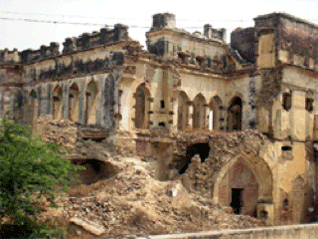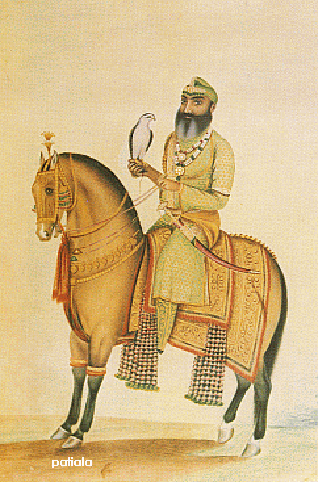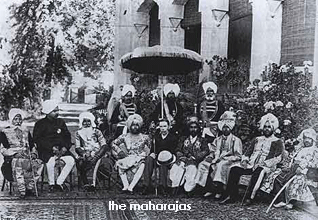Architecture
The Sikh Fort of Phul
Crumbling Heritage
by NARAYANJOT KAUR
The historical fort of Phul, which is said to be the origin of
the Phulkian Sikh Kingdoms (Patiala, Jind, Nabha) of Punjab, has been lying in a state of utter
neglect, courtesy government apathy.
Baba Phul had built the fort in 1712 but then, it was like a mud-fort.
Later, Rajas Hamir Singh, Bharpoor Singh and others showed interest
and got it restructured. During British rule, a lot of money was spent
on the ornamentation of the fort.
Alas! None bothered to preserve it later; neither the kith and kin of
the royals nor the state/ centre authorities of independent India.
The fort, which could bring the region on the country's tourism map, is now
crying for immediate attention with the entire structure crumbling and
turning into debris. A major portion of its structure has collapsed and
the huge gates of the main entrance were closed a few years ago.
However, finding the space as a source of income, the Market Committee,
Phul, let it out. Now, some stalls (tea and vegetables) are being run
outside the gate. A power transformer has also been installed there.
Inside the fort, the old Baradari of the Rajas is now being used as
the Block Development and Panchayat Office (BDPO). Further, officials of
the Panchayat Samiti also have their office inside the historical
building. Some modifications have been done to suit their needs.
Most of the samadhis have collapsed and the rest may fall anytime. An
underground tunnel, which led to the queen's bathing pond located a few
steps away, has also caved in. The high walls of the fort could not
brave the weather for long and have been razed to ground. The artistic
wooden doors of the rooms, which used to be embedded with jewels and
colourful glasses, have been attacked by pests. Furthermore, due to the
callous attitude of the authorities concerned, the sides of the fort
have been encroached upon.
The elderly people of Phul town, who had seen the period when there was
lot of activity inside the fort, feel delighted on recounting the days
when the Deputy Commissioner, Naib Sahib and Tehsildar had their
offices in the fort. They had also witnessed the glorious movement of
the last ruler of the fort, Maharaja Partap Singh, whom a huge
cavalcade used to accompany on his visits to the fort.
These seniors, however, feel sad about the fact that the system
brought the downfall of the fort.
"We have witnessed the fort when it used to shine from every corner.
The pearls, diamonds, artistic wooden pieces, handicraft and mattresses
were so beautiful and expensive. Later, some wicked people decamped
with every precious thing and ruined it like anything," said
77-year-old Ram Sarup, who runs a provision store just opposite the
fort.
"Though the fort is located just a few miles from the ancestral village
of former chief minister Captain Amarinder Singh, he did not bother to
preserve it when he was in power," rued some elders.
Ironically, neither the Archeological Survey of India (ASI) nor the
state tourism department is willing to conserve the fort, even now.
While the superintending archeologist of the ASI, S.N. Kesarvani, refused
to comment over the crumbling structure of the fort, special secretary
of the Tourism, Punjab, Hussan Lal said, "As of now, there is no
proposal to revamp or preserve the Phul Fort. We have details of all
historic monuments in the state and if it was required anytime, the
project could be cleared as the availability of funds is not a
problem."
[Courtesy: Sikh Nugget]
July 15, 2010
Conversation about this article
1: R. Singh (Canada), July 15, 2010, 3:30 PM.
What a shame! Palaces and forts of Rajasthan are preserved and sources of attraction for tourists all over, while ours lie in ruins, barely acknowledged.





